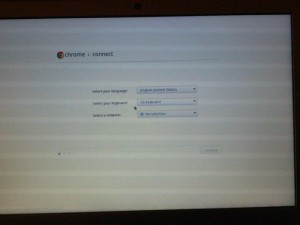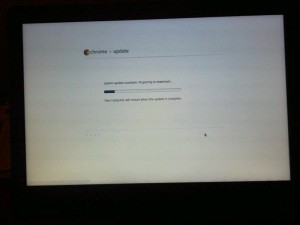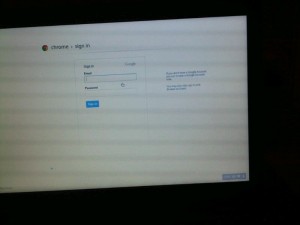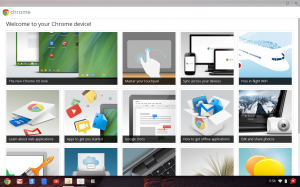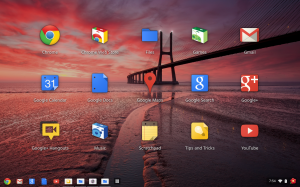The Chromebook has now been with its real owner for a month. Mostly positive experiences.
Issue #1 – Adding bandwidth when almost out of bandwidth
The Chromebook gives you a warning when you are about to run out of the free 100MB for the month. This is good. It gives you time to register for the 1GB plan. Successful so far. Unfortunately, the 100MB ran out DURING this transaction. In particular, it ran out between the payment and the acknowledgement screen. Which made the acknowledgement screen say “waiting” forever.
What went well: You can pay by phone which means you can upgrade your plan even after you run out of bandwidth.
What could have gone better: When calling, the answer was that the plan had already been upgraded (from the online attempt) and the solution was to restart the Chromebook. Which could have been done without the phone call
Issue #2 – “Old” version of Chrome
The Chromebook is currently on Chrome version 21. One website required “Chrome 22 or later.” Chrome 22 came out in September. The problem occurred in November. I don’t think it is reasonable for a website to demand the very latest browser. This isn’t a technical website – people shouldn’t have to upgrade constantly. Plus you can’t upgrade the Chrome browser until the Chromebook itself is ready to upgrade. It’s only one website so I find more fault with the website than the Chromebook.
Solution: I used the website on my Mac reading it over the phone to the Chromebook user.
A good thing
When I used the Chromebook, I’d get “dropped connection” type issues and need to refresh the page. Apparently I was pushing the Chromebook too hard by having two tabs and changing pages often. The Chromebook’s real owner never does that and hasn’t had any such issues. This does make sense – we are on 3g and I’d never seek to do so much on my phone.

